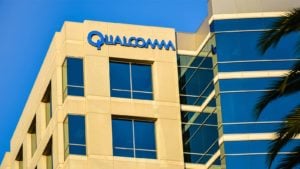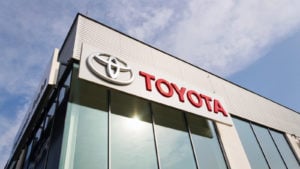If you ever watch the CinemaSins YouTube channel, you’ll understand the core motivation behind the next Magnificent 7 stocks. Now, if you’ve been in the market for a short time – or even not at all – you immediately know these seven giant stalwarts. It’s just like how people recognize Meryl Streep or Brad Pitt, even if you don’t watch movies.
However, movie studios – especially the independent ones – can’t afford some of these A-plus superstars. In that case, they may hire up-and-coming alternatives. To borrow the catchphrase of CinemaSins, we’re talking about discount Meryl Streep or discount Brad Pitt. That’s the key motivation behind the next Magnificent 7 stocks. You can potentially enjoy far greater returns by going with the undervalued plays rather than the marquee ideas.
However, just like in Hollywood, going with a lesser-known alternative carries significant risks. Either you’re going to look like a superstar talent acquisition specialist – like finding the next Tom Cruise – or you’re going to end up looking a clown. I know a thing or two about the latter.
Still, if you can handle the risk, below are discount Magnificent 7 stocks.
Baidu (BIDU)
We’re all familiar with Alphabet (NASDAQ:GOOG, NASDAQ:GOOGL); how can you not be? Frankly, the underlying Google Search, Google Ads, and Google Cloud are the Father, Son, and Holy Ghost of the Internet. Do you want to get anything done online? You best give your top sacrifice to the Google overlord or fire and brimstone will rain down on you from Mountain View.
Well, for the bargain hunter, Baidu (NASDAQ:BIDU) might be the more appealing alternative. Indeed, people often label Baidu as the Google of China. It’s also offered at a very attractive rate against forward earnings projections. Right now, GOOG trades at 20.53x forward earnings, higher than 59.49% of competitors in the interactive media space.
On the other hand, BIDU trades at 10.92x forward earnings. That’s lower than 74.68% of peers in the same sector. As well, analysts are onboard with BIDU, rating it a strong buy with a $176.21 price target, implying 63% upside. Thus, it’s one of the top ideas for the next Magnificent 7 stocks.
MercadoLibre (MELI)

To be completely fair to any Amazon (NASDAQ:AMZN) Internet honor defenders, let me pay homage. Amazon is a unique enterprise and I do mean that in its purest grammatical sense. Notice I’m not saying very unique or most unique, which would anger any English teachers out there. No, Amazon is truly one of a kind because it’s not just an e-commerce giant.
Rather, it’s a technology powerhouse and let’s face it, a destroyer of small business dreams. To find an alternative, I went with MercadoLibre (NASDAQ:MELI). Based in Argentina, MercadoLibre has been an absolute monster this year, gaining over 75% of equity value since the January opener. However, it may still have some legs left. Commanding significant leverage in the Latin American market, MELI is your growth opportunity.
It’s also one of the undervalued alternatives to the Magnificent 7 stocks. Right now, the market prices MELI at a price/earnings-to-growth (PEG) ratio of 0.6x. On the flip side, AMZN runs a PEG ratio of 2.99x.
HP (HPQ)

Okay, I now for certain that millions of people on the internet will defend the honor of Apple (NASDAQ:AAPL). To be completely upfront, I’m not saying to not buy AAPL. Clearly, when you look at Apple’s financial metrics – such as its stable and recently rising gross margins – you understand that even with all the consumer pressures present, people continue to fork over their money for the latest i-Whatever products.
And also to be 100% clear, consumer electronics alternative HP (NYSE:HPQ) completely lacks such brand presence. However, if we’re going to look at gross margins, this metric for HP has been stable since around 2014. Also, for the company’s fiscal quarter ended July 2023, it posted a year-over-year rise in gross margin. That tells me that a) HP is good value and b) people still need their electronics.
Indeed, HPQ runs a forward price-earnings (PE) ratio of 8.16x. On the other hand, AAPL trades at nearly 29x forward earnings. We’re talking about standing on opposite ends of the valuation spectrum. Thus, HPQ may be one of the next Magnificent 7 stocks.
Hello Group (MOMO)

Again, when you’re talking about Magnificent 7 stocks, you can’t find a one-to-one equivalent. Frankly, there may never be a parallel to Meta Platforms (NASDAQ:META). That’s just like saying, “Find me a discount Shohei Ohtani!” Oh, you mean find an ace pitcher that can rake? I’m sorry, we may live in an every-star-is-special paradigm but let’s face reality: Ohtani is Japanese for genetic anomaly.
However, if we were just to talk about one component of Meta’s spectacularly massive business, my choice for alternative would be Hello Group (NASDAQ:MOMO). Based in China, Hello is a social media platform that facilitates connections, particularly of the romantic variety. Still, it’s a massive risk considering that MOMO lost about 27% of equity value since the January opener.
That said, MOMO is undervalued, especially if you consider the narrative of China’s massive population. At the moment, shares trade hands at 4.91x forward earnings. META isn’t getting anywhere close to that valuation, trading at just under 20x forward earnings. Just keep in mind the risk factor.
Intel (INTC)

Another unenviable comparison to make, Microsoft (NASDAQ:MSFT) may be a boring enterprise. However, it continues to dominate, largely because of the pertinence of its many relevant businesses. From its software offerings to its massive cloud-computing network, it’s difficult to even think of an alternative. Subsequently, since the start of the year, MSFT gained over 54% of equity value.
However, if I had to come up with an idea for the next Magnificent 7 stocks regarding computer hardware, I’d go with Intel (NASDAQ:INTC). As you’re probably aware, INTC has not had a great run over the long view. In the trailing five years, it lost almost 6%. However, since the January opener, INTC skyrocketed 64%. As I argued recently, plenty of short covering activities may be bolstering INTC.
But beyond the technical considerations, INTC appears undervalued. For example, INTC trades at a Shiller PE ratio of 12.1x. In contrast, MSFT runs at a Shiller PE ratio of 62.37x. It’s hard to make an apples-to-apples comparison but Intel offers the better deal on paper.
Qualcomm (QCOM)

For one thing, no one wants to badmouth Nvidia (NASDAQ:NVDA) in the slightest. Yes, NVDA runs valuation metrics beyond the redline. However, it continues to prove the pessimists wrong. Since the beginning of the year, NVDA gained over 244% of equity value. Fundamentally, investors appreciate the semiconductor specialist for undergirding the artificial intelligence revolution.
This may be one of the most difficult enterprises for which to offer an alternative for next Magnificent 7 stocks. But if I had to do it, I would go with Qualcomm (NASDAQ:QCOM). Aside from some hometown bias, QCOM has proved itself worthy in recent sessions. In the trailing month, it gained almost 17% of equity value. For the year, it’s now up nearly 21%.
As a vital cog in the 5G rollout and communications technology (think Internet of Things), it invests heavily in AI and machine learning. Perhaps best of all, QCOM trades at only 14.09x forward earnings. As much as we all love NVDA, it trades at a forward multiple of 29.64x.
Toyota (TM)

Treated like a deity among some circles, Elon Musk of Tesla (NASDAQ:TSLA) commands significant influence. We all know him for pioneering electric vehicles – though to be historically accurate, EVs have been around for a while. However, it’s fair to say that Musk popularized EVs for the modern market. As a result, he inspired a radical paradigm shift, making finding an alternative difficult.
In many ways, Toyota (NYSE:TM) is the opposite of Tesla. Significantly older and with a richer history, Toyota cut its teeth through combustion-powered cars. As American automakers insisted on building large, gas-guzzling vehicles, consumers suffering financial pressures switched to smaller, more fuel-efficient Japanese cars. That alone sparked a paradigm shift but ironically, EV companies threaten Toyota with the same playbook today.
Still, brand trust goes a long way, especially when middle-income consumers ponder making the shift to EVs. It’s possible that Toyota might win out in the long run. Currently, TM trades at a trailing earnings multiple of 9.55x. In contrast, TSLA runs a PE ratio of an almost unsightly 75.34x.
On the date of publication, Josh Enomoto did not have (either directly or indirectly) any positions in the securities mentioned in this article. The opinions expressed in this article are those of the writer, subject to the InvestorPlace.com Publishing Guidelines.

